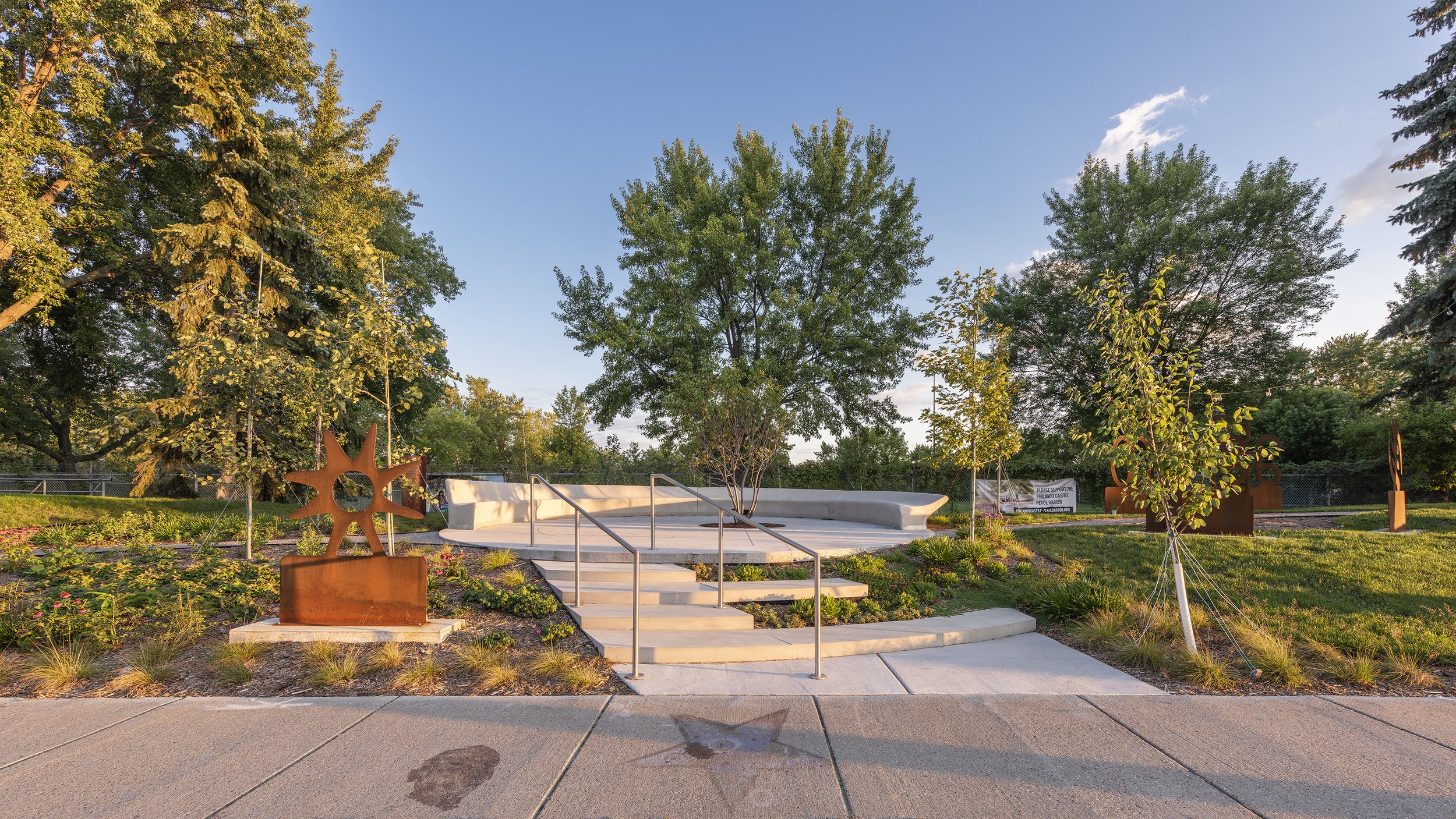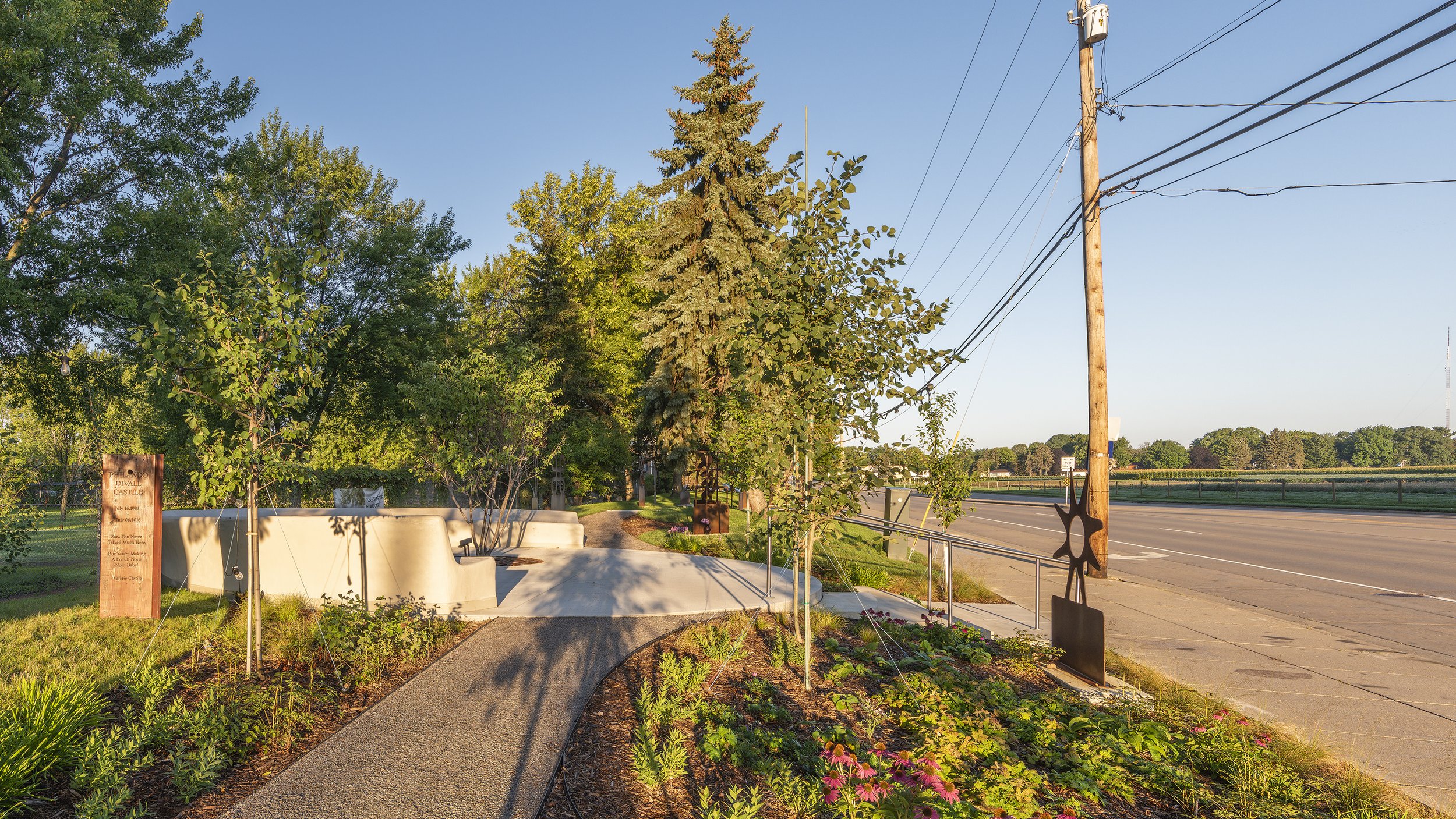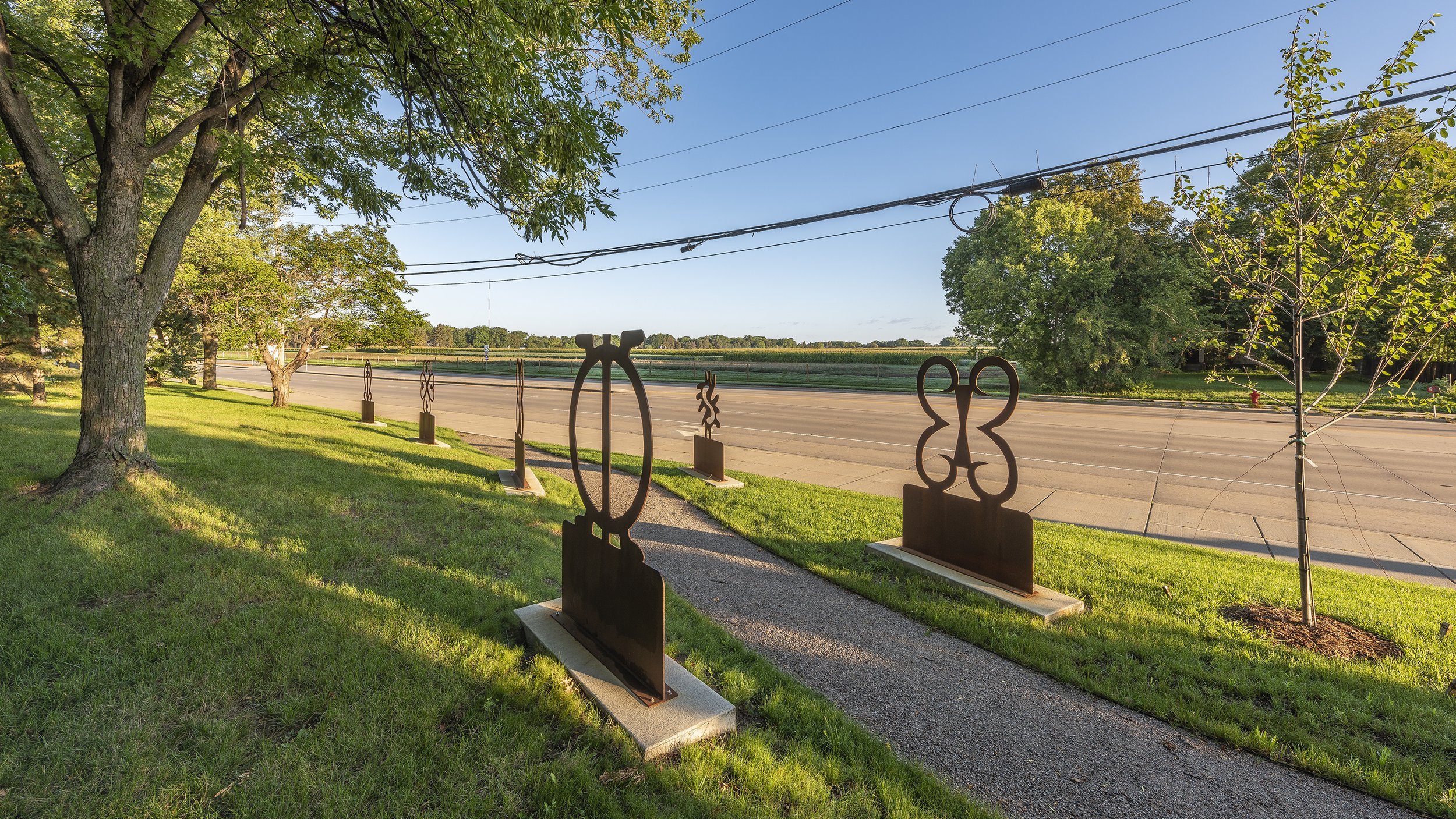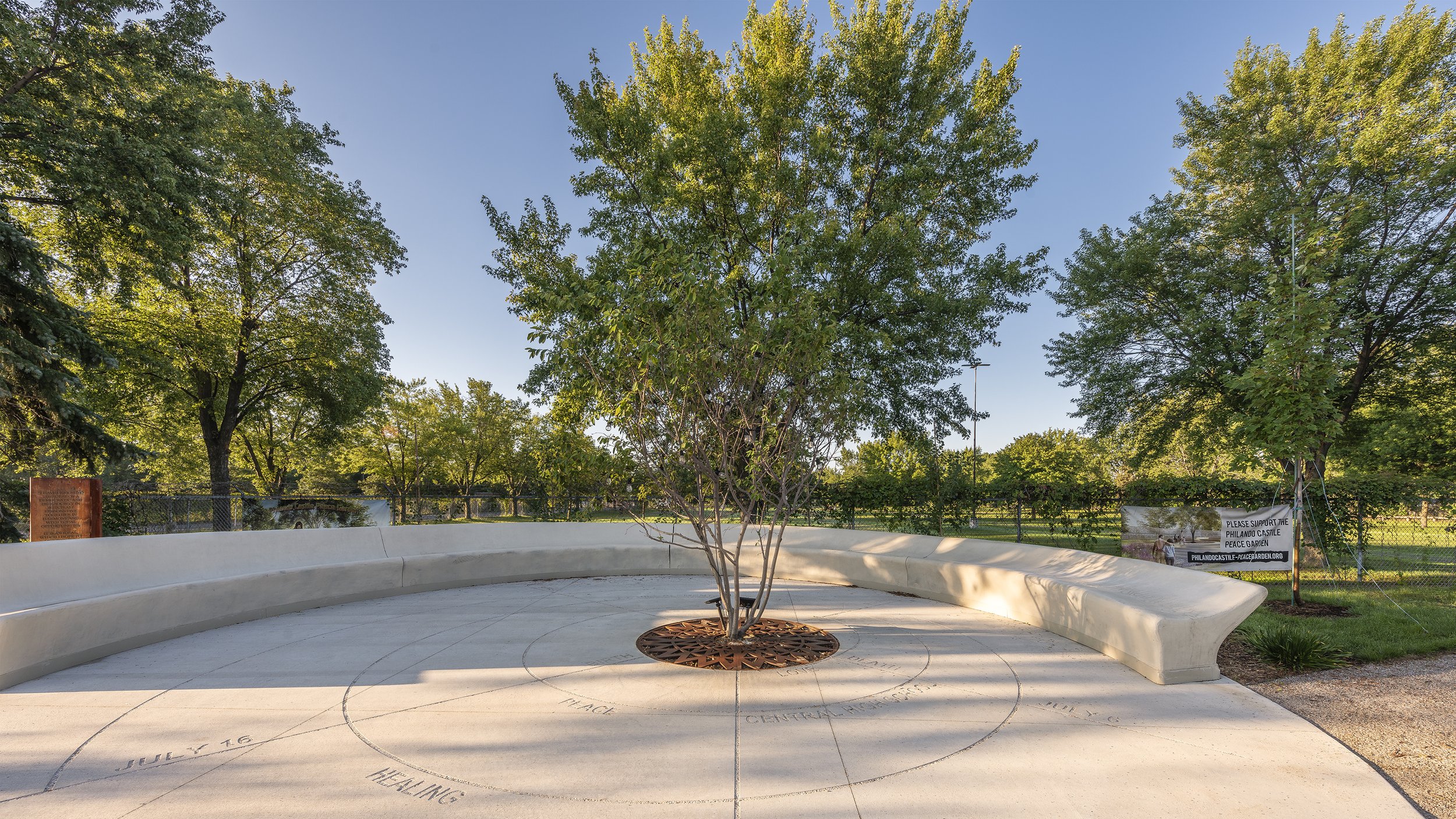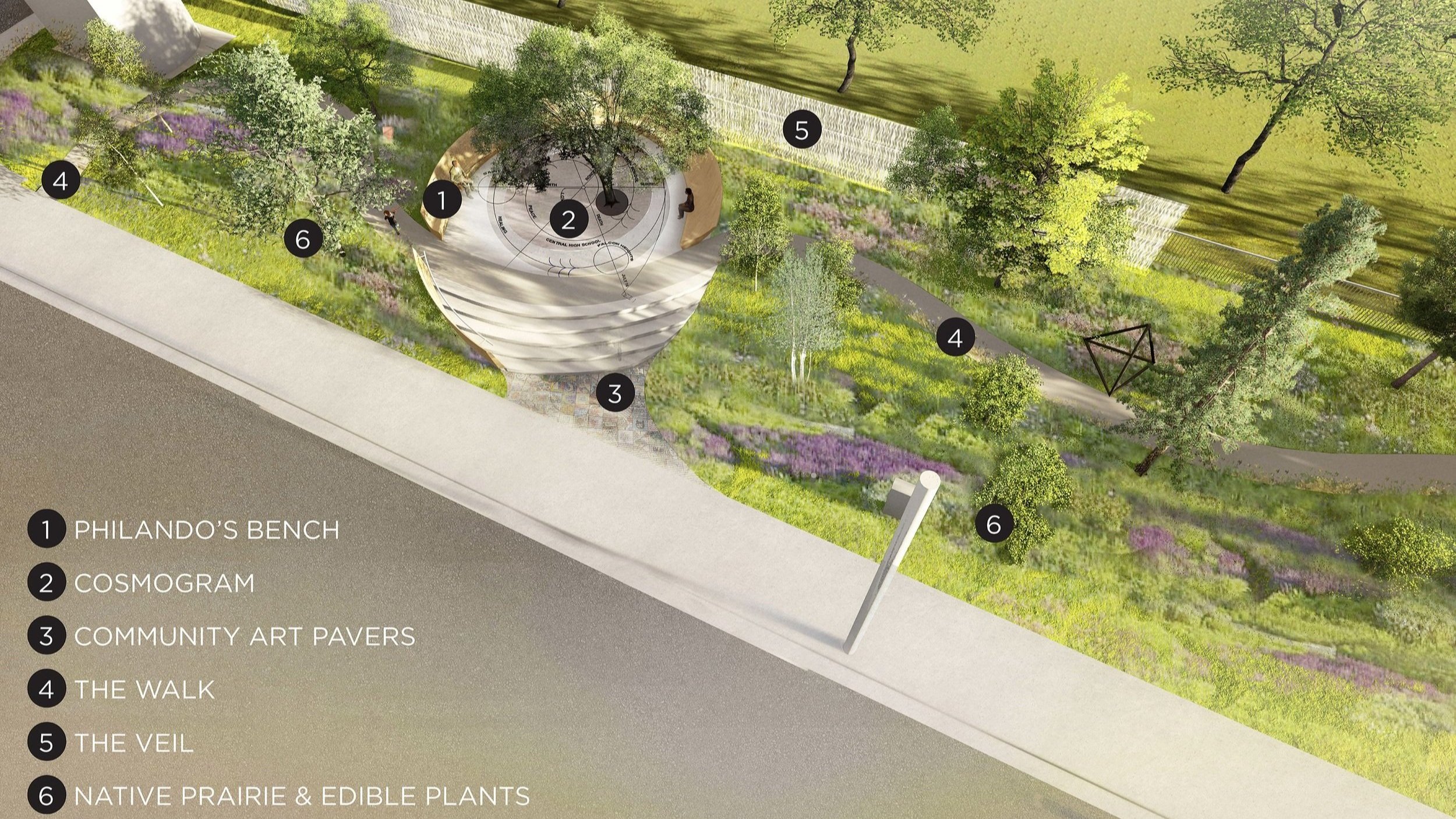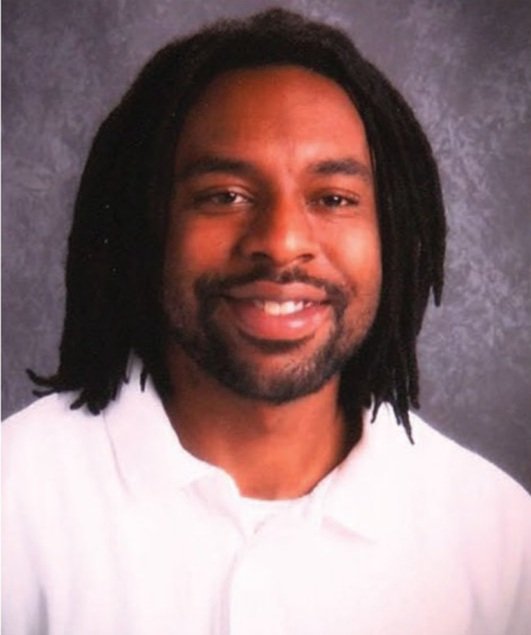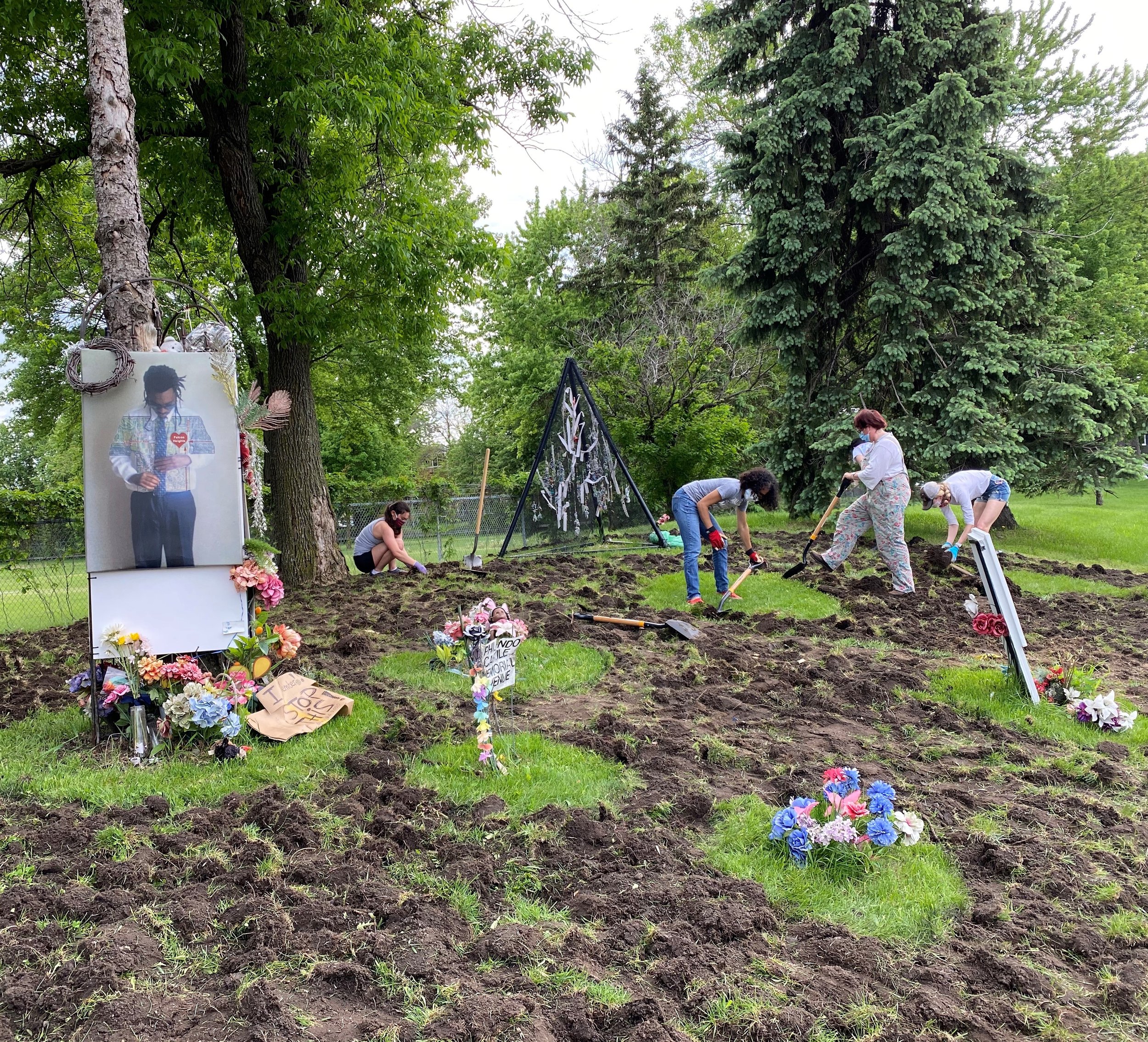PHILANDO CASTILE PEACE GARDEN
Location: Falcon Heights, Minnesota
Client: Local Community + Family of Philando Castile
Status: Completed in 2022
Area: 5,000 SF
Team: TEN x TEN, 4RM+ULA, Seitu Ken Jones
Slideshow Photos: Morgan Sheff Photography
Philando Castile devoted his life to providing food and kindness to Saint Paul Public School children. On July 6, 2016, he was killed in a police-involved shooting on Larpenteur Avenue in Falcon Heights, Minnesota, just west of the north entrance to the Minnesota State Fairgrounds.
The Philando Castile Peace Garden is a contemplative gathering space for peace, justice and healing built to honor and remember Philando Castile. In the wake of his tragic death at the hands of police officers, Philando’s family, community members and local organizations joined forces to establish a vision and raise money to make the peace garden a permanent installation at the site of his shooting.
The site, located along the newly named Philando Castile Avenue (formerly Larpenteur Avenue) between Minneapolis and Saint Paul in Falcon Heights, MN. The site of the garden is also the place where Philando was murdered, in the street right of way adjacent to the garden. Since his shooting in 2016, the garden has become sacred ground, protest space and community gathering space. Permanent and temporal art installations, messages and artifacts have been placed throughout the core area of the garden for the last five and a half years and will continue to have a place among the new permanent features.
PHILANDO CASTILE
The Philando Castile Peace Garden stands as a serene place for reflection, healing, and justice, dedicated to commemorating Philando Castile. On July 6, 2016, Castile’s life was tragically taken by police gunfire on Larpenteur Avenue, despite his innocence. This incident, broadcasted live on Facebook, was seen by over a million people globally within a day, sparking widespread outrage and a grassroots memorial on the site of his death adorned with tributes by friends, neighbors, and artists. Castile, left behind a community in mourning and a nation grappling with issues of police violence that would further escalate with the murder of George Floyd.
THE GARDEN VISON
In response to this tragedy, Castile’s family, community members, and organizations mobilized to create a lasting tribute in the form of a peace garden. Strategically positioned along the renamed Philando Castile Avenue, the garden not only serves as a place for mourning and remembrance but also as a vibrant space for community activism and gatherings. Its establishment on the fringes of the Minnesota State Fairgrounds transforms the location into a significant site for contemplation and communal unity, embodying Castile’s enduring spirit and the community’s resolve for justice and peace. With the vision of memorializing Castile’s legacy, the design team carefully orchestrated the site design, integrating artwork and community engagement to stage the experience for deeper narratives and reflection in partnership with architects and artists.
THE SITE
The selection of the site for the Philando Castile Memorial Garden spanned three years, with extensive community engagement, reflecting the political and social dynamics surrounding Philando Castile’s tragic death. Initially, the site was a nondescript planted berm between the State fairgrounds’ edge and the county road strafddling Saint Paul and Falcon Heights. The area gained significance as the community and Castile’s family began memorializing him there. Despite resistance over naming it the “Philando Castile Memorial”—stemming from concerns about police-community relations—the space was ultimately embraced by the community as a site of remembrance. This transformation underscored the site’s contested nature, challenging the design team to navigate a landscape fraught with social and political tensions.
Through extensive site analysis and community engagement, the team developed a phased concept that honored Castile’s legacy, confronting and integrating the landscape’s contested nature into the memorial’s fabric, making it a dynamic space for remembrance, healing, and advocacy.
The design team catalogued the site’s evolution through photo documentation as a way to develop design concept and narrative. The five panoramas capture the three phases of the site, the site as memorial with offerings from the community, a temporary garden installation with a community members, and the permanent Garden. Restoration Day is the annual community event to honor Philando.
Context
Understanding how the actions leading up to Philando’s death, site context research, and artifacts gathered by the community members were critical point of perspective in developing the project mission, goals and design concepts.
Soil Turn 2020 - Building Soil + Foundation for the Garden
The design team organized a two-day soil turn event to seed annual cover crop to get the Garden marked temporally. A few weeks following in June, more volunteers joined to plant annual flower plugs to prepare for July 6th Restoration Day events. Honoring tributes left behind by community and enhancing the memorial were important in creating a place for rituals and the process of healing.
Restoration Day July 6th, 2020 - Marking the Circle
In collaboration with a local flower installation group, the Garden was decorated with cut flowers on Restoration Day. The process of flower arrangement began at sunrise on July 6th to mark the sacred site.
THE DESIGN
This memorial encapsulates Philando Castile’s legacy and the sorrow of July 6, 2016, through processions, paths, gardens, and the central gathering platform surrounded by edible native plants and artwork. The landscape architect designed the overall plan to integrate artworks and symbolism to create a contemplative experience while it can also serve as a place for large memorial events. The heart of the garden is a central gathering platform encircled by a bench shaped with a section profile from seats of Philando’s ‘91 Oldsmobile seats. This bench stands as a testament to collaboration. A serviceberry tree within a custom corten steel grate featuring African motifs and an etched surface of the platform with a cosmograph, were designed by the artist. The cosmograph anchors the space highlighting key aspects of his life, including his roles at J.J. Hill Elementary School and within the Saint Paul Rondo neighborhoods.
The path to this sacred space is marked by five steps, each representing a bullet from the fatal shooting, guiding visitors through a reflective journey back to Castile’s life. Surrounding pathways, adorned with edible and native flora, pay homage to Castile’s dedication to nutrition, complemented by Adinkra symbol sculptures, enriching the garden’s narrative. This carefully designed space does not only honor Philando Castile’s memory, but also fosters a place for collective reflection and healing, demonstrating how landscape architecture can weave together a community’s story of loss, resilience, and hope. The meticulous arrangement of pathways, planting, and art installations underscores the garden’s role as a living narrative and a sanctuary for contemplation.
Central Gathering Platform
The heart of the Garden is a central gathering platform marked by five steps, each representing a bullet from the fatal shooting, guiding visitors through a reflective journey back to Castile’s life. The platform anchors a space for gathering and contemplative rituals, as well as a stage during large events like Restoration Day.
Symbolism + Story
This sacred space is encircled by a bench shaped like Philando’s ‘91 Oldsmobile seats. A serviceberry tree within a custom corten steel grate featuring African motifs, and an etched surface of the platform with a cosmograph were designed by the artist. The cosmograph anchors the space highlighting key aspects of his life, including his work at J.J. Hill Elementary School and within the Saint Paul Rondo neighborhoods.
View Approaching From East Towards the Central Gathering Circle + View Towards West From the Central Platform
Surrounding pathways, adorned with edible and native flora, pay homage to Castile’s lifelong dedication to nutrition. The walk pulls visitors off the sidewalk and into an immersive garden experience.
The path towards west is marked by Adinkra symbol sculptures as a sense of honoring and protection, enriching the garden’s narrative and the experience of movement back down the slight grade to the sidewalk
THE GARDEN TODAY
Today, the Philando Castile Peace Garden is maintained by local volunteers, underlining its status as a community-operated memorial. Trust ensures its upkeep, embodying the collective commitment to memory, advocacy, and healing. The garden not only commemorates Philando Castile but also serves as a vital space for annual events, offering a sanctuary for those seeking solace and a platform for continued advocacy for justice. This project underscores the profound role landscape and gardens can play as a space of communal healing, reflection, and resistance, embodying a powerful testament to the life and legacy of Philando Castile.
This carefully designed space not only honors Philando Castile’s memory, but also fosters a place for collective reflection and healing, demonstrating how landscape architecture can weave together a community’s story of loss, resilience, and hope.

